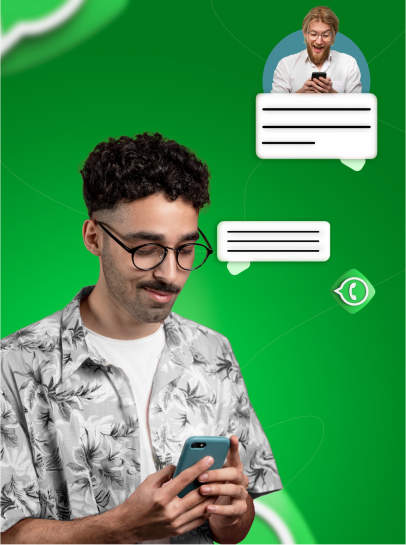The Sales Funnel: The ultimate guide to turning visitors into loyal customers
Want to know the secret to turning your website visitors into loyal customers who stick with your brand? the answer lies in one powerful strategy: the sales funnel. It’s the engine that drives the shift from curiosity to commitment, turning interest into lasting relationships. For any business, the sales funnel is a fundamental part of both marketing and sales success.
Want to know the secret to turning your website visitors into loyal customers who stick with your brand? the answer lies in one powerful strategy: the sales funnel. It’s the engine that drives the shift from curiosity to commitment, turning interest into lasting relationships. For any business, the sales funnel is a fundamental part of both marketing and sales success.
When implemented correctly, a well-designed funnel can significantly improve your sales performance. In fact, research shows that companies using effective funnel strategies can see up to a 50% increase in purchase-ready leads, that’s a game changer in today’s competitive market.
In this article, we’ll break down how the sales funnel works and how you can use it to grow your customer base, boost conversions, and build lasting loyalty.
What is a sales funnel?
A sales funnel is a model used in marketing and sales to represent the journey a potential customer takes, from the moment they discover your products or services to the point where they make a purchase.
It’s called a "funnel" because the number of prospects is typically large at the beginning, then gradually narrows down at each stage, leaving only the truly interested individuals who eventually decide to buy.
Stages of the sales funnel
1- Awareness
At this stage, the potential customer becomes aware of your product or service.
They’re usually not actively looking for a solution yet, but they come across your content or ad during their daily browsing.
Ways to reach them:
- Paid advertising campaigns on social media platforms or Google
- Educational or informative YouTube videos
- Value-driven social media posts that encourage sharing (e.g., tips or statistics)
- Search Engine Optimization (SEO) to ensure your website appears in relevant keyword searches
- Partnering with influencers (Influencer Marketing)
2- Interest
At this point, the customer has shown interest in what you offer and has started exploring and researching more details.
Here, your goal is to build an initial connection and create curiosity by providing more persuasive, trust-building information.
What to offer at this stage:
- Educational or informative content (e.g., articles, videos)
- Comparative content showing how your solution stacks up against others in the market
- Lead capture through sign-up forms or newsletter subscriptions
3- Desire
At this stage, the customer is seriously considering making a purchase, but may still be hesitant or comparing you with competitors.
Now it's crucial to clearly communicate your value, remove any barriers, and address the questions or concerns that may be holding them back.
What to offer at this stage:
- Real customer testimonials and success stories
- Highlight product features that solve the customer’s problem in a unique way
- Limited-time offers or conditional discounts (e.g., "Get 10% off if you sign up within 48 hours")
- Address common objections and FAQs clearly and confidently
4- Action
This is the decisive moment, the stage where the prospect becomes a paying customer by making a purchase, signing up, or registering.
To ensure a smooth and successful conversion:
- Simplify the buying or sign-up process (don’t ask for too much information)
- Offer multiple, convenient payment options
- Send an instant confirmation after the transaction
- Provide real-time support in case of any payment or technical issues
5- Loyalty
The sales funnel doesn’t end with the purchase, after the sale, the focus shifts to building customer loyalty.
At this stage, businesses aim to strengthen the relationship, ensure customer satisfaction, and encourage repeat purchases.
Strategies to build loyalty and increase customer retention:
- Follow up with thank-you messages, personalized greetings, or product updates
- Offer exceptional customer support
- Launch loyalty or rewards programs
- Request feedback or reviews about their experience
- Encourage referrals by offering discounts or gifts in return
The importance of the sales funnel
Top reasons why the sales funnel is an essential tool for promoting your business
Analyzing customer behavior and making data-driven decisions:
A sales funnel allows businesses to gain in-depth insights into customer behavior at every stage of the buying journey, from awareness to decision-making. With this analysis, companies can make informed decisions based on real data, enhance the customer experience, and create stage-specific content that resonates with their audience.
Identifying performance weaknesses:
The sales funnel helps detect the exact stages where potential customers drop off and abandon their journey. This insight enables marketing teams to fix weak points, improve user flow, and reduce churn rates—ultimately increasing conversion rates between stages.
Personalizing marketing messages based on funnel stage:
By tracking where a customer is within the funnel, businesses can send personalized marketing messages tailored to their current interests and needs—significantly improving conversion potential.
Monitoring performance and measuring results accurately:
A well-structured sales funnel provides clear performance metrics at each stage, such as click-through rates, number of leads, and conversion rates. These metrics help companies make smarter, data-backed decisions and continuously refine their strategies to achieve better results over time.
Top tips for building a successful sales funnel
To create an effective sales funnel, you must first understand your sales process and how each step can become an opportunity to attract, engage, and convert potential leads into paying customers.
Here are three key steps to help you design a high-performing sales funnel:
Clearly define your target audience:
Start by identifying exactly who you're targeting. What are their interests? How do they make purchasing decisions? Where can you reach them?
The more deeply you understand your ideal customer, the more effectively you can craft a marketing message that speaks directly to them.
Create a personalized experience for each lead:
Every customer has unique needs and expectations, that’s why it’s crucial to make their journey through the funnel feel personal and relevant, each stage of the funnel should serve a specific purpose, from capturing attention, to building trust, to driving action. The more tailored the experience, the higher your chances of conversion.
Stay engaged with your leads:
Attracting attention is just the beginning, you need to maintain communication, use interactive content, free offers, or even direct messages on social media to nurture relationships and build trust that ultimately leads to a purchase decision.
Key metrics for measuring sales funnel effectiveness
1- Conversion rate:
The conversion rate is one of the most important indicators of a sales funnel’s success, it measures the percentage of leads who become actual customers and helps evaluate how effective your marketing and sales strategies are, a high conversion rate typically reflects the quality of your campaigns, the relevance of your ads, and your ability to attract the right audience.
You can improve this rate by optimizing your website’s user experience, offering compelling promotions, and personalizing marketing messages based on customer behavior.
2- Sales cycle length:
The sales cycle length refers to the amount of time it takes for a lead to move through all stages of the funnel, from awareness to final purchase, shortening this cycle increases the speed of revenue generation and enhances operational efficiency.
It can be reduced by streamlining the buying process and providing clear, helpful content that assists prospects in making faster decisions.
3- Customer lifetime value (CLV):
Customer lifetime value represents the total revenue a business can expect to earn from a single customer over the course of their relationship, this metric helps prioritize marketing budgets toward high-value customers, ultimately increasing return on investment (ROI).
You can boost CLV by improving service quality, fostering long-term relationships, and encouraging repeat purchases through loyalty initiatives.
Conclusion
A well designed sales funnel is a powerful tool for turning prospects into loyal, repeat customers, by applying the right strategies and consistently tracking performance, you can craft a customer journey that builds trust, reinforces your brand, and drives long-term success.





